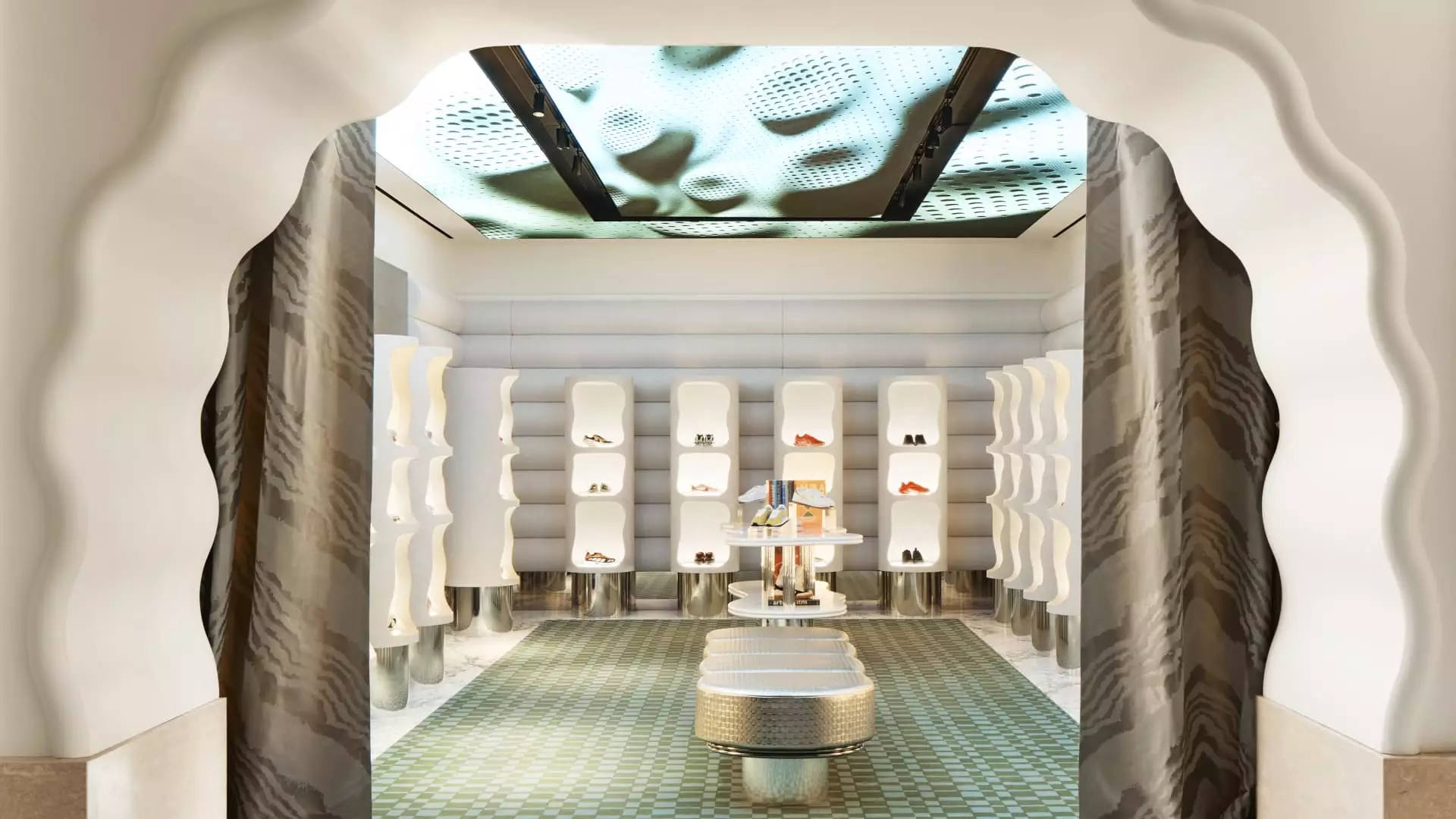In a bold move that has turned the spotlight on luxury retail culture, French department store Printemps has planted its flag in New York City. Situated in the Financial District, this flagship store embodies the very essence of Parisian elegance and innovation, but the timing raises eyebrows. With rising inflation and a tightening luxury market, one must question: is this a strategic gamble or a misstep? Printemps officially opened its doors just as spring unfurls, pouring freshness into a sector that seems a tad wilted under economic pressures.
From the get-go, Printemps stands out with its sheer scale— a sprawling 55,000 square feet designed like a chic Parisian apartment. But the allure of its products, notably featuring around 25% hard-to-find French brands, such as Joseph Duclos handbags held by the likes of Taylor Swift, raises a critical question: In a world where online shopping reigns, is a physical location for luxury goods still relevant?
A Oasis Amidst Economic Turbulence
The luxury retail landscape faces unprecedented challenges. Consumer habits have shifted significantly since the COVID-19 pandemic; affluent shoppers are no longer splurging with the same abandon. The consulting firm Kearney has projected that global luxury spending growth will dwindle to between 1% and 3% annually through 2027, after a staggering 27% boom in earlier years. Economists are painting a picture of economic uncertainty with inflation contributing to a noticeable decline in discretionary spending among even the wealthier classes.
So why is Printemps launching a high-stakes expansion now? Their CEO, Jean-Marc Bellaiche, argues that American consumers still prove resilient and enthusiastic lovers of shopping. While this might hold some truth, it is equally essential to scrutinize the motivations behind such a venture. Could it be that they are overly optimistic or perhaps blind to the shifting tides? It raises a concern that, while aiming to mirror the gaiety of Parisian retail therapy, they risk becoming a relic amidst towering e-commerce giants.
Art Deco Revival—More Than Just Aesthetics?
An intriguing component of the Printemps experience is its architectural splendor. Nestled in the historic Art Deco skyscraper at One Wall Street, the retailer seems to embrace both nostalgia and modernity. The “Red Room,” with its chic interior and sprawling shoe collection captivatingly referred to as a “shoe forest,” paradoxically embodies both luxury and whimsy. But one must ponder: does a stunningly restored Art Deco aesthetic enhance the shopping experience, or does it distract from the core purpose of such a venue—selling goods?
The design choices are provocative but serve a deeper function; they aim to evoke an emotional response. In a digital world where consumers can purchase anything with a click, experiential retail environments are designed to stimulate the senses. Yet, is this strategy simply a Band-Aid on the wound of waning retail sales? Or worse, does it create an illusion of value for items that are still, at their core, just materials marketed at inflated prices?
Dining & Glamour: A New Retail Paradigm?
Complementing the retail layout is the promise of a French dining experience courtesy of Gregory Gourdet, a well-known name in the culinary scene. The idea of combining luxury retail with a fine dining restaurant is not novel, yet it raises a thought-provoking question: Can a luxurious meal justify the aura around high-priced merchandise? Is this an enriching addition that enhances customer loyalty or merely an extravagant theater attempting to mask a lack of substantial consumer interest?
As Americans embrace new comfort zones, marked by the merging of dining and shopping experiences, Printemps may just be ahead of the curve. But then again, one might argue that a store should primarily serve its purpose as a retail space rather than a dining destination.
Fostering Inclusivity in Luxury
Interestingly, Printemps also seeks to cater to tourists and less affluent shoppers by including more accessible items. This balancing act between high-end products and value offerings speaks volumes about their approach to redefining luxury in an ever-evolving economic environment. It appears to be a conscious effort to extend the allure of luxury beyond mere economic thresholds.
However, in doing so, the brand faces another dilemma. By broadening its appeal, is it diluting the exclusivity that luxury brands often promise? As the lines become blurred, one must wonder whether Printemps is paving the way for a new inclusive retail experience or courting potential confusion among its core clientele.
In the grander narrative of luxury retail, Printemps’ arrival signals more than mere expansion; it embodies a complex ensemble of risks and rewards amid fluctuating market conditions and evolving consumer preferences. The bold choice to plant roots in New York City calls for a deeper reflection on what luxury truly means in today’s society, challenging conventional wisdom and forcing us all to rethink the future of shopping.


Leave a Reply